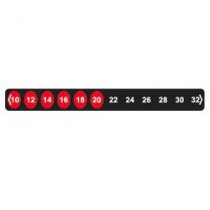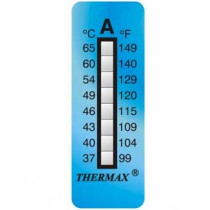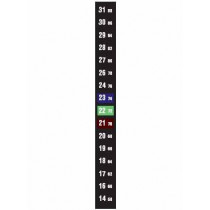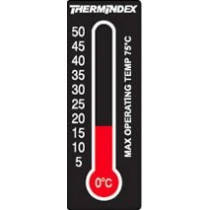No products
Prices do not include tax.
Temperature control in incubators
Likewise, we must clarify that effective temperature control is always the safest and best possible option. The aim is to achieve the expected results with your incubator. Also, to verify the actual inside temperature through sensors and temperature indicators, thus preventing significant alterations.
the best temperature indicators for incubators
Adhesive thermometer with 12 temperature points. This indicator shows the real temperature by changing the colour of the temperature points placed on the label.
LCD environmental thermometer 12 levels...24,48 €This product is supplied in packets with 10 thermometers. Irreversible-type temperature indicator with 8 temperature points. This is an adhesive thermometer than can be stuck on any surface or product. The points are marked with temperature in ºC and ºF.
8-level irreversible thermometers (pack 10...15,93 €Adhesive label with 16 temperature points. This indicator changes colour as it shows the box with the temperature detected at anytime with green colour. Being reversible, it will change on the basis of any increase or decrease in the temperature recorded.
16 level adhesive LCD vertical thermometer...25,10 €Vertical adhesive thermometer with 11 temperature points. This indicator displays the temperature by changing its colour from black to red.
11 level LCD reversible thermometer (pack...19,18 €
Temperature and humidity control for incubators
Temperature control in neonates is essential for their development, especially in the first week. This is one of the critical factors, as well as humidity, heart rate and baby weight. Premature babies lose body heat easily, due to, among other things, thinner skin. Continuous monitoring of body temperature as well as incubator air temperature is therefore necessary. For this, it is usual to apply a sensor to the lower abdomen, which continuously informs us of body temperature. Incubators are also equipped with an air sensor that regulates the temperature of the environment inside the cabin. Depending on the body temperature, the ambient temperature is adjusted, thus regulating the baby's temperature and making it remain stable at 36ºC.Temperature labels for incubators
The importance of temperature control in hatcheries for hatchlings, as well as other parameters, makes them fully equipped with electronic sensors. However, the use of temperature labels is very useful, as a redundant and at the same time comfortable system for visual control quickly. The temperature labels allow anyone to see the current temperature in an easy way and also guarantee that the sensors are working correctly. The adhesive thermometers, just stick them on the outside of the incubator and they will inform us at all times of the temperature inside. Likewise, when the baby is more advanced and leaves the incubator, there are fever thermometers, which allow them to stick to the skin and monitor the temperature comfortably in the first months. These thermometers through a color change, clearly indicate body temperature.Other incubators and temperature control
In addition to hatcheries for neonates, there are other types of incubators, oriented to animals or to the reproduction of chickens. The use of thermal labels in these incubators, facilitates the control task and complements the electronic type sensors of the same. Let's see some example in more detail:
Temperature control for chicken incubator
The temperature inside a chicken incubator should be around 38 °C to obtain high‑quality animals. However, you should be aware that this temperature value may vary throughout the incubation process. Therefore, a fully functioning incubator temperature sensor is required.The reason behind this is none other than the mortality rate in chickens, if we keep a constant temperature and make the following mistakes:
- Lack of maintenance on the incubator fan
- An increase in the number of eggs to be incubated
- Not drying the water that usually appears at the bottom of the incubator
- Problems opening the hatches
The importance of the incubator temperature sensor
This accessory is essential to make control and monitoring tasks easier. It will help you to detect if the temperature is too high, if there are any sudden variations, and check the temperature of the water that provides humidity.
Maintenance on the sensor is important so that we can correct whatever is necessary, at a glance. After the first 10 days, we advise you to regularly check the temperature of each egg’s shell to anticipate any problems.
The best thing to do is to adjust the temperature as the days go by, gradually lowering it from 38 to 35 °C. This scientifically proven method will allow you to raise chickens that develop their internal organs correctly and without defects.
By using reversible thermometers, we can check if the temperature is right at any time. On the other hand, irreversible thermometers such as the 8‑level thermometer allow us to certify the maximum temperature reached and ensure that the process has been correct.
We hope we have managed to provide you with the fundamental notions to incubate your chicks correctly and without any worries. Having quality sensors and controlling the incubator temperature will make it much easier for you.




